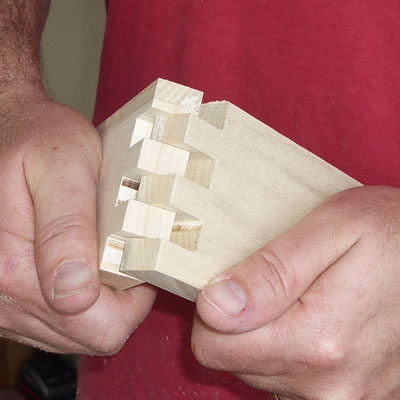Dovetail joints are a classic way to join the corners of a project. They look timeless and offer great strength.
As mass production of wooden pieces came into play, manufacturers found it easy to lose the slope on the pins and tails and modify the joint into a box joint. This was used on utilitarian projects as well as finer furniture and still remains an option for woodworker today.
Just as with the dovetail, there are many ways to make a box joint. Table saws, routers and even hand tools can form the interlocking fingers and make a strong and attractive joint.
This week, let us know what is your preferred method of cutting box joints.
[poll id=”125″]


Good survey!
I recently started a thread at the WoodNet Power tools forum – the replies could be helpful here, too. You might want to read this thread.
More ways than I can fathom.
Also, I recently did the first part of a review of the new F3 finger jointer joint template to use on the Leigh D4 jig.
Al
Good poll, but really not one for the hand tool user. Frankly, box or finger joints are a product of using power tools. Through dovetails are actually easier to do than box joints when you do them by hand because, as Frank Klaus has shown, you don’t need to make them all the same, you just need to make them fit – the angle will hide that fact that the angles aren’t all the same, so long as they are all tight!
Power tools do make straight cuts very well, that’s why box joints are a hallmark of power woodwork.
Just like several other kinds of joinery, there are some that handtools do really well and some that are best done with power tools!
Good poll, but really not one for the hand tool user. Frankly, box or finger joints are a product of using power tools. Through dovetails are actually easier to do than box joints when you do them by hand because, as Frank Klaus has shown, you don’t need to make them all the same, you just need to make them fit – the angle will hide that fact that the angles aren’t all the same, so long as they are all tight!
+1